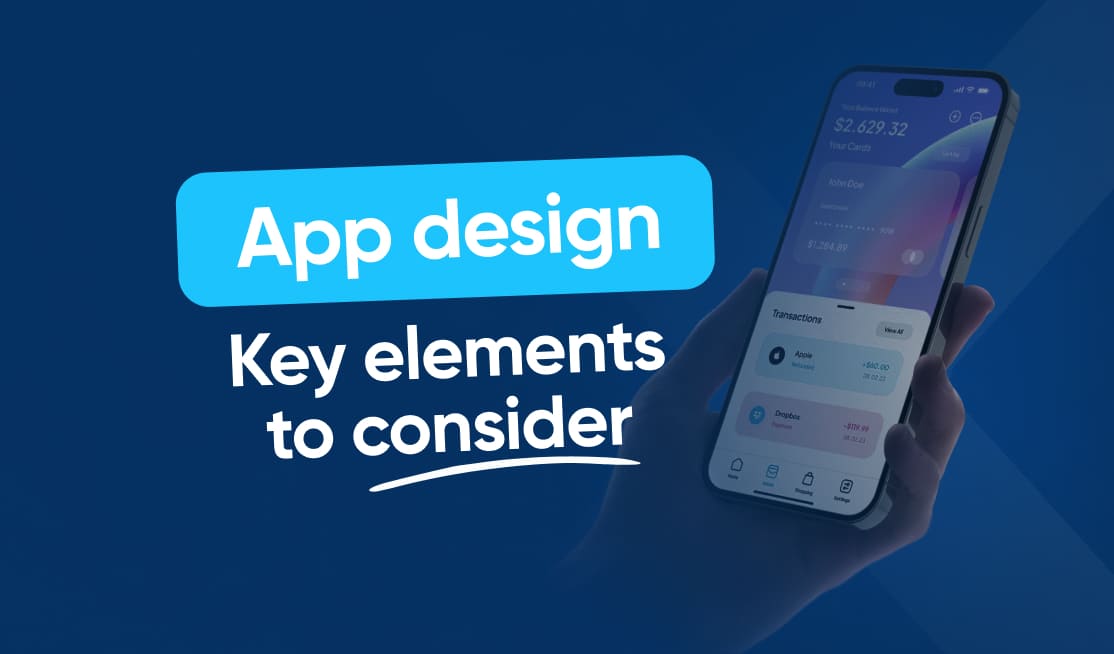
In today’s digital era, mobile apps have become an integral part of our everyday lives. They have revolutionized the way we communicate, work, and entertain ourselves. Whether you are a seasoned developer or someone just starting their app development journey, understanding the key elements to consider when designing a mobile app is crucial to create a successful and user-friendly experience for your target audience.
Understanding the Basics of Mobile App Design
When it comes to designing a mobile app, it is essential to have a solid understanding of the basics. One of the fundamental aspects to focus on is the user interface (UI) and user experience (UX). The UI refers to the visual aesthetics and layout of your app, while the UX encompasses the overall experience and usability of the app. These two elements play a critical role in attracting and retaining users.
Creating a visually appealing and user-friendly mobile app is crucial in today’s competitive market. A well-designed user interface can make or break your app’s success. Users expect a visually appealing and intuitive interface that allows them to navigate through the app seamlessly. It is essential to create a design that prioritizes ease of use, clear navigation, and intuitive interactions.
When designing the user interface, it is important to consider the target audience and their preferences. For example, if your app is targeting a younger demographic, you may want to incorporate vibrant colors and modern design elements. On the other hand, if your app is targeting professionals, a more minimalist and professional design may be more appropriate.
In addition to the visual aspects, the user experience is equally important. The overall experience and usability of the app can greatly impact user satisfaction and engagement. A well-designed user experience ensures that users can easily accomplish their goals within the app and have a positive interaction with the interface.
The Importance of User Interface and User Experience
A well-designed user interface can make or break your app’s success. Users expect a visually appealing and intuitive interface that allows them to navigate through the app seamlessly. It is essential to create a design that prioritizes ease of use, clear navigation, and intuitive interactions. Additionally, ensuring that the app is responsive and optimized for different screen sizes is vital to provide a consistent experience across devices.
When it comes to user experience, it is crucial to consider the entire user journey within the app. This includes the onboarding process, task completion, and overall satisfaction. By understanding the needs and expectations of your target audience, you can design an experience that meets their specific requirements.
One way to enhance the user experience is by conducting user research and testing. By gathering feedback from real users, you can identify pain points and areas for improvement. This iterative process allows you to refine your design and create a more user-centric experience.
Choosing the Right Platform: iOS vs Android
Choosing the right platform for your mobile app can significantly impact its success. iOS and Android are the two dominant platforms, each with its unique characteristics and user base. It is crucial to consider factors such as the target audience, market share, and development complexity when deciding which platform to prioritize. Understanding the strengths and limitations of each platform will help you make an informed decision and optimize your app for maximum reach and effectiveness.
iOS, the operating system developed by Apple, is known for its sleek design and seamless user experience. It has a reputation for attracting users who are willing to spend more on apps and in-app purchases. On the other hand, Android, developed by Google, has a larger market share globally and offers more customization options for both users and developers.
When deciding which platform to prioritize, it is important to consider your target audience and their device preferences. If your app is targeting a specific niche or demographic that predominantly uses iOS devices, it may be beneficial to focus on developing for iOS first. However, if your target audience is more diverse or primarily uses Android devices, developing for Android may be a better choice.
Ultimately, the decision of which platform to choose should be based on a thorough analysis of your target audience, market trends, and development resources. By understanding the unique characteristics of each platform, you can make an informed decision that maximizes the potential reach and effectiveness of your mobile app.
Defining Your App's Purpose and Target Audience
Before diving into the design process, it is essential to clearly define your app’s purpose and identify your target audience. Understanding the core functionality and benefits your app will offer is vital in creating a focused and impactful user experience.
When defining your app’s purpose, it is important to consider the problem it will solve or the value it will provide to users. This involves brainstorming and researching to ensure that your app offers something unique and meets a specific need within the market. By identifying the core functionality of your app, you can create a solid foundation for its development.
But it doesn’t stop there. It is also crucial to consider potential future functionalities and features. Planning for scalability and long-term success can help your app stay relevant and adaptable in a rapidly changing technological landscape.
Identifying Your App's Core Functionality
Identifying the core functionality of your app involves determining what problem it will solve or what value it will provide to users. Take the time to brainstorm and research to ensure that your app offers something unique and meets a specific need within the market. Additionally, considering potential future functionalities and features can help you plan for scalability and long-term success.
When brainstorming the core functionality of your app, think about the pain points that your target audience may have. What challenges do they face? How can your app address those challenges and provide a solution? By understanding the needs of your target audience, you can create an app that truly resonates with them.
Furthermore, it is important to consider the competitive landscape. Analyze similar apps in the market and identify what sets your app apart. What unique features or functionalities can you offer that others don’t? By differentiating your app, you can attract a specific audience and stand out from the competition.
Understanding Your Target Audience's Needs
To create a mobile app that resonates with your target audience, it is crucial to understand their needs, preferences, and pain points. Conducting market research, analyzing user behavior, and gathering feedback are effective ways to gain insights into what your potential users expect from your app. This information can guide your design decisions and allow you to tailor the app to meet their specific needs.
When conducting market research, consider demographics such as age, gender, location, and interests. This will help you create user personas that represent your target audience. User personas are fictional characters that embody the characteristics and behaviors of your ideal users. By understanding these personas, you can design an app that caters to their preferences and aligns with their expectations.
Additionally, gathering feedback from potential users through surveys, interviews, or usability testing can provide valuable insights into their pain points and desires. By involving your target audience in the development process, you can create a user-centric app that addresses their needs and exceeds their expectations.
In conclusion, defining your app’s purpose and identifying your target audience are crucial steps in the app development process. By understanding the core functionality your app will offer and the needs of your target audience, you can create a focused and impactful user experience that resonates with users and sets your app apart from the competition.
Incorporating Essential Design Principles
Design principles play a significant role in creating visually appealing and user-friendly apps. Two key principles to focus on are simplicity and consistency.
The Role of Simplicity in App Design
Keeping your app design simple and straightforward can greatly enhance the overall user experience. Avoid cluttered layouts, excessive features, and confusing navigation. Instead, aim for a minimalist approach that prioritizes usability and allows users to complete tasks effortlessly. This will not only make your app more enjoyable to use but also increase user satisfaction and engagement.
The Power of Consistency in User Interface
Consistency is key when designing a mobile app. Maintaining a consistent user interface across different screens, menus, and interactions creates familiarity and reduces cognitive load for users. By using consistent colors, fonts, buttons, and icons, you can ensure that users feel comfortable and confident when using your app, leading to a more seamless and intuitive experience.
Ensuring App Performance and Security
Performance and security are critical aspects of mobile app design that should never be overlooked. Prioritizing speed, responsiveness, and implementing robust security measures will contribute to a positive user experience.
Prioritizing Speed and Responsiveness
In the fast-paced world we live in, users expect apps to load quickly and respond promptly to their actions. Optimizing your app’s performance by minimizing loading times, optimizing code, and using efficient caching techniques can greatly enhance user satisfaction and reduce bounce rates. Additionally, considering factors such as network connectivity and offline capabilities can further improve the overall user experience.
Implementing Robust Security Measures
Security is a significant concern when it comes to mobile app design. Implementing robust security measures to protect user data and maintain privacy is crucial. Utilize encryption techniques, secure authentication methods, and regularly update your app to patch any potential vulnerabilities. By prioritizing security, you can build trust with your users and safeguard their valuable information.
Testing and Improving Your Mobile App
Testing and gathering user feedback are essential steps in the app development process. They enable you to identify and address any issues or areas of improvement to ensure a seamless and user-friendly experience.
The Importance of Beta Testing
Beta testing allows you to gather feedback from a select group of users before the app’s official release. This feedback can uncover any bugs, usability issues, or potential improvements that may have been overlooked during the development process. Incorporating user feedback and making necessary adjustments based on their experiences can significantly enhance the overall quality of your app.
Gathering User Feedback for Continuous Improvement
Even after the official release, it is crucial to continue gathering user feedback and monitoring app performance. This allows you to stay updated on user needs and expectations, identify potential areas for improvement, and prioritize future updates and features. Incorporating user feedback as an ongoing process ensures that your app remains relevant and competitive in the ever-evolving mobile app landscape.
In conclusion, designing a mobile app involves considering several key elements to create a successful and user-friendly experience. From understanding the basics of mobile app design to incorporating essential design principles, prioritizing app performance and security, and continuously testing and improving, these elements collectively shape the overall user experience and determine the success of your mobile app. By carefully considering each element and adapting your design approach to meet the specific needs of your target audience, you can create an app that stands out in the competitive app market.


